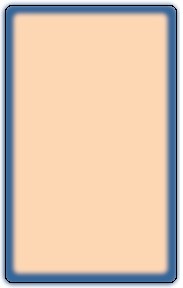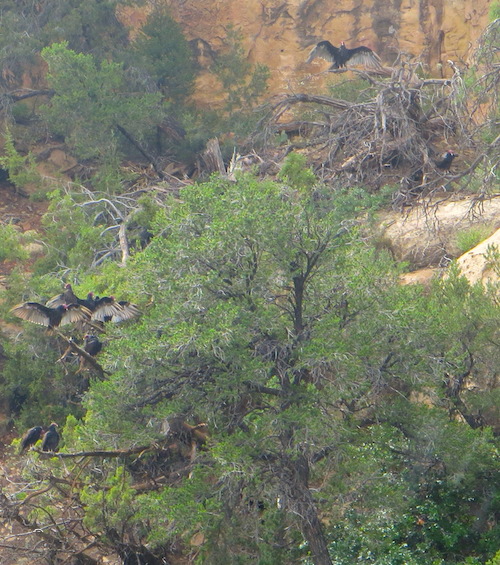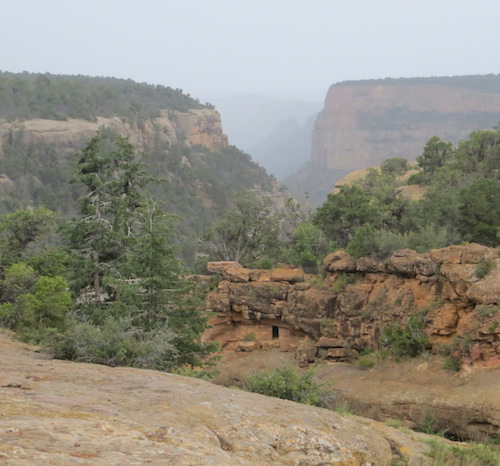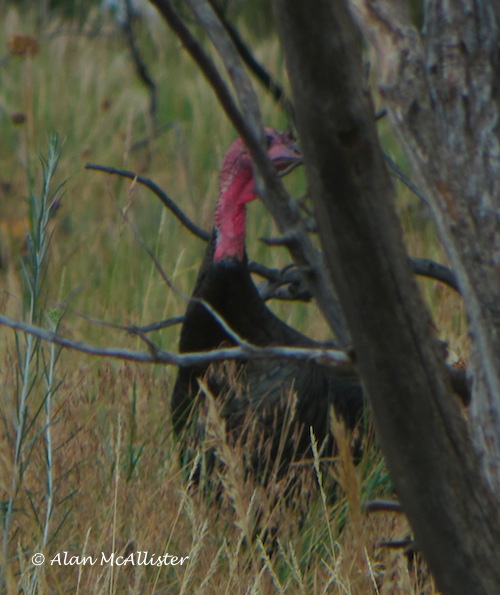by Alan McAllister, CCHt PhD-phys
published in Shakti Yogi Journal
the universe grows green…
the road to the under world is open.”
Tewa Pueblo Song
Standing at the edge of the mesa, I feel into the space in front of me, wanting to soar out into it like the vultures circling effortlessly over the canyon below (Andrews, 200). My spirit body is already flying, while my physical body is expressing the fear it has about separation, or that I might do something as ‘unphysical’ as teleport across to the next mesa. Perhaps my body knows that I could do that, have done that, somewhere, sometime.
I pull my spirit back, ground into the light red sandstone beneath my feet, and am content to watch the vultures rather than trying to join them today. I play with time and imagination; I reach back to my ancestral peoples who lived and experienced this place. Sliding into an altered state, I intuitively catch the edge of a felt knowing: that they were so connected to the primordial nature of their world that they could live free from thought.
We are all inherently part of the energetic field of life, nature, the world, but the ancestral peoples were more deeply connected to it. I use ceremony to remind myself of what was once innate and instinctual. Wanting to remember this sense of connection, I call it up out of the bones and cells of my body; breath it in from the air, rain, and stone of this ancient land. I open to what I have to let go of to be spacious enough inside my being to allow the memory and understanding I seek to become present. I invoke the transformative quality of the vultures to assist me.
My mind knows from physics that the physical world has the basic properties of wholeness, continuity and flow (Bohm). The fields that describe the quantum nature of physical objects extend throughout all space, blending with each other into a single universal field. The gravitation of relativity has the same properties (Misner, Thorne and Wheeler) There is nothing in modern physics that divides things into parts and pieces. The universe is everywhere connected and continuous; seamlessly joined, without gap or pause. It is only in our minds that we perceive separate objects.
The ancestral peoples lived in this seamless world, felt it in their being. Being on the mesa, next to the ocean, in the forests or atop mountains, it is easy and safe to open to this ever-present fabric. Dropping inward, I feel for the knowing of connection and continuity that my being holds, opening to the akashic field imprints (Laszlo) that the ancestral people left when they lived here. The spiritual energies of directions, elements, and animal spirits were part of what they breathed and felt all the time. All life was ceremonial and sacred, even when doing the dishes (Hạnh).
It’s clear that my answer is to let go of the mental concepts that break my experience into parts, that separate my experience from the wholeness in which I am inherently embedded. Releasing them, other awareness’ come present and shape my experience; dancing with time and space, here on the edge of the world.
All the spiritual traditions teach us about letting go, emptying out the mind, releasing the natural attachments of the human being. The words vary, but the truth is the same. The yogis teach that to release oneself from the wheel of karma one has to let go of attachment to the outcome of one’s actions. Action is necessary in daily life to complete and release the old energy patterns we call karma. Only by surrendering the outcomes back to the Divine can we avoid creating new patterns and new attachments as we resolve the old ones (Sakar 111). Buddhists speak similarly about non-attachment (Levine). Taoists a thousand years ago taught that we must release intentions to be free (Wong). Castaneda’s Don Juan speaks of the controlled folly of the spiritual warrior (Castaneda 88), in which all things are equal, so while one must choose, what one chooses doesn’t matter.
Knowing that all things are equally part of the whole fabric of being, and still making choices, is controlled folly. This is the wholeness of the quantum field, the gravitational field. At the level of the energy fields that pervade and compose the universe, how can you say that one part is more important than another? If you cut out any piece of it, the whole is diminished, wounded, and incomplete. In the equations this generates harshness and static. The nature of the universe, the dharma of the world itself, is expressed in the feeling of seamless participation that the spirits of those long-ago ancestors tasted and share with me now.
Traveling through southwest Colorado and coming into the harvest season of the year, I wonder about different meanings of harvesting. The ancients knew how to work within the fabric of their world; to clear places for planting seed so that working within nature a harvest could come back to them. They knew how to harvest sustainably, as long as the rains came, and sometimes even after they didn’t (Palmer 62). They studied the effortlessness of the vultures, and opened to effortlessness in their own beings. The T’ai Chi or Taoist master similarly flows with and makes use of the fundamental laws of the world to do the seemingly impossible.
Modern Western culture has come to look at the world as something made of pieces that we can pick up and take home to use for ourselves. We cut the natural fabric apart with our minds and then cut the earth apart with our machines. This goes against the wholeness and continuity of the universe and there are inevitable consequences. Mining the topsoil as well as the mountains, the forests, the water tables, and now the seas, we take things from the world in a non-sustainable way, a way that leaves holes behind, wounds that won’t close, and disrupts the web of life in expanding circles. The consequences may be rapid or slow, but the life-web that sustains us will both unravel and then attempt to correct the imbalances (Brown).
Here we are at the Equinox, that time of year when things are harvested, when the northern hemisphere moves from a preponderance of yang to a time of yin, from acting to receiving. As human beings we must harvest in some sense; we must feed and clothe ourselves, but we can do it consciously. We can learn the skills to create and to understand, not so we can be better at taking from the world, but so that we can find a new way to move in its flow. We will find the ease of the vulture’s flight and the T chi master’s movements, while ceasing and repairing the wounding of our planet. What is it that we must let go of and empty out, so that we may receive what truly serves both us and the world that supports us? How do we harvest sustainably, rather than mining; live in the flow of life, rather than hoarding death? It is time to shift back into a consciousness of wholeness, of continuity; time to open to the question of how to do this.
We can’t live exactly as the ancestral peoples did in terms of their food, tools, and clothes, but we can open ourselves to remember the wholeness of the world that they knew and experienced. We must do this on all levels of being: physically with crops and resources, learning to harvest sustainably; emotionally and sexually, making love together rather than taking safety or satisfaction from our partners and friends; mentally with our ideas and concepts, so that we may let the thoughts we need flow through our intuition and knowing, and spiritually finding and owning our place again in the web of life [see below].
An outer wholeness and harmony can only come when there is an inner wholeness and harmony. Personal harmony depends on external harmony as well. All the spiritual traditions teach us to let go of the external, but the point is really about reducing the capacity of the external to upset the internal. Living in the world, we become free when, and as, we purify and make whole our internal being. When we are internally whole and continuous (centered and clear), nothing external can upset us.
Changing our relationship to the earth so that we no longer see it only in terms of what it produces or what we can take from it, but as a web of life that we are part of, is integrally based on the shift of consciousness in ourselves. Find the wholeness which lives deeply inside (McAllister); release internal divisions and heal wounds; embrace our internal shadows so that we stop projecting them out in the world. Only as we become whole can we move through the wholeness of the world and soar effortlessly with the vultures.
the self-judgements and sense of not being enough.
I give these to the vultures.
They will help me purify myself, becoming whole and golden.
Andrews, Ted. Animal Speak. Llewellyn Publications, St Paul MN, 1993. Print.
Bohm, David. Quantum Theory. Dover Publications, New York, 1951. Print.
Brown, Tom. The Quest. Berkley Books, NY NY, 1991. Print.
Castaneda, Carlos. A Separate Reality. Pocket Books, NY NY, 1971. Print.
Hạnh, Thích Nhất. The Miracle of Mindfulness. Beacon Press, Boston MA, 1975. Print.
Laszlo, Ervin. Science and the Akashic Field. Inner Traditions, Rochester VT, 2004. Print.
Levine, Stephen. Healing into Life and Death. Anchor Books, NY NY, 1987. Print.
McAllister, Alan. “Listening to Stillness”. Shakti Yogi Journal, Winter 2015. Print & Web. https://www.shaktiyogijournal.com/listen-to-stillness.html
Misner, CW, Thorne, KS , and Wheeler, JA . Gravitation. WH Freeman, San Francisco, 1973. Print.
Palmer, Jennifer. “In Awe of the Amazon”. Shakti Yogi Journal, Summer 2015. Print & Web. https://www.shaktiyogijournal.com/environmental-science-in-awe-of-the-amazon.html
Sakar, PR. The Spiritual Philosophy of Anandamurti. A’nanda Ma’rga Publications. Denver CO. 1981. Print.
Wong, Eva. Nourishing the Essence of Life. Shambhala Publications, Boston, 2004. Print.
Action Steps – use your fabulous imaginations, but here are a few suggestions:
1) Opening to nature: Take time to feel into yourself in nature. Choose a hillside, stream, or tree that draws you in some way. Be present with it, breath into your heart or belly, and open to being in conversation with it. Feel into yourself and notice what you notice. It may be very little, or sometimes profound. Keep curious and practice.
2) Sustainable living, small footprint: Notice where food and other things you consume come from. The less processing or transportation is involved the smaller the footprint. Farmer’s markets are for these reasons besides being organic and tasty. Explore a similar process for clothing and other manufactures.
3) Making Love: Choose a friend or lover to do something with/for: eg. cooking a meal or taking a walk. Take some time to ask how this serves you, them, the field of relationship you create together? Being gentle with yourself, notice and release expectations, fears, or wants. Propose the activity and carrying it out focusing on the field that is created when you are together. Have fun.
4) Receiving answers: Select a topic. Ask yourself what the core question really is. Allow that to percolate. Hold the question in an empty space into which answers can come. Notice how your intellect reacts and set those things to one side. Allow yourself not to know the answer yet. Keep emptying the space, making note of anything that seems particularly useful. Be curious and have fun.
5) Releasing internal judgement: Notice something or someone that annoys you. Let that go (especially if they really are annoying). Ask what this mirrors inside you. What aspect of yourself do you have trouble accepting? This is an internal judgement and separation. Notice the words in your head. Let them go. Notice associated emotions. Let them dissipate. Be gentle. Do not try to fix it. Feel yourself bringing love to it instead.
[© 8/2015]




